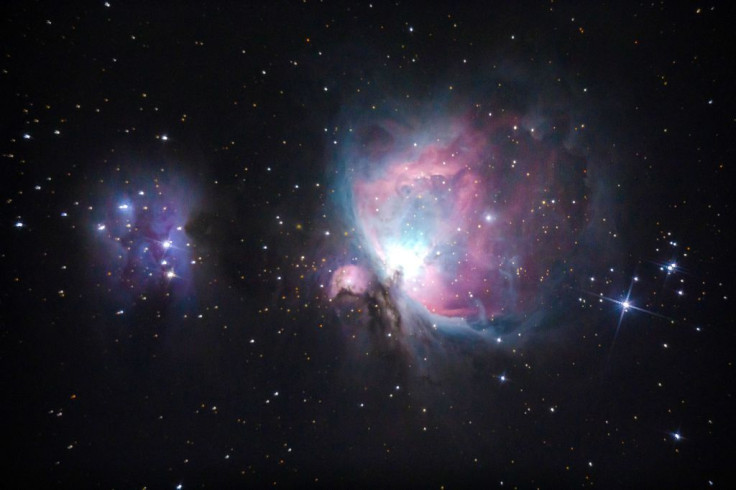NASA Captures Stunning 'Interstellar Rose' In Colorful New Spitzer Image [PHOTO]

NASA has shared an image of a stunning "interstellar rose" in space.
On its official Twitter page, NASA posted an incredible image of a rosebud-shaped cluster of newborn stars taken by the space agency's Spitzer Space Telescope, which launched in August 2003 and is still in operation. Located 3,300 light-years away from Earth in the constellation Cepheus, the star cluster has 130 young stars at the latest count.
Make mom feel out-of-this-world this #MothersDay. Send her this interstellar rose, courtesy of @NASASpitzer. This rosebud-shaped cloud of gas & dust, known as a nebula, is filled with bright young stars. Learn more: https://t.co/CO6WNGcOAA pic.twitter.com/76k33AnWv3
— NASA (@NASA) May 12, 2019
According to NASA's post, the cluster's stellar population were born from a gas and dust cloud which has the capacity to produce a thousand stars the size of the Sun. It is believed that the molecular clouds' fragments formed stars after becoming extremely cold and dense. Though not much else is known about this particular star formation process, scientists believe that most of the stars in the Milky Way galaxy were created in these types of clusters.
Our Sun is thought to have come from a cluster similar to this one billions of years ago. However, the stars in the cluster eventually drifted apart after radiation from the newborn stars destroys the surrounding placental material.
As for how the image was taken, the Spitzer Space Telescope team used an infrared array camera that can detect invisible infrared light with wavelengths 10 times longer than visible light. The composite image, which shows a region about a quarter the size of the full moon, has four different colors which depict light at varying wavelengths. The blue traces emission at 3.6 microns, green for 4.5 microns, orange for 5.8 microns and red for 8.0 microns.
Over a period of 1 million years, a short time in astronomic terms, a massive, irregular bubble was formed by the stars in the cluster within the molecular cloud that once covered its entirety. In the image, embedded young stars produce intense light that heats up the glowing dust grains on the surface of the bubble, making them appear rosy pink.
In the image, the molecular material believed to be rich in hydrocarbons appears reddish.
The cold molecular cloud that created the stars isn't clearly visible in the image. But what can be observed are the three newborn stars near the middle of the picture which are blowing supersonic gas into the cloud. Upon hitting the cloud, these jets of gas heat up carbon monoxide molecules in the cloud. The result shows up as the green "rosebud stem" in the image.
Meanwhile, NASA also recently shared a new image from the Hubble Space Telescope showing another cluster, though this time it's of a galaxy. Given the designation SPT-CL J0615-5746 (shortened to SPT0615), this galaxy cluster is located in the constellation of Pictor (the Painter's Easel) and contains one of the oldest galaxies in the universe, according to NASA's website.
Galaxy SPT0615-JD is believed to have formed just half a billion years after the big bang.
Like a kaleidoscope of light, this ancient galaxy cluster shimmers into view. One of these galaxies may have emerged 500 million years after the big bang — putting it among the earliest structures to form in the universe. Thanks, @NASAHubble 😍Dive in: https://t.co/xZUqRIqUKt pic.twitter.com/JxwkVt2k3P
— NASA (@NASA) May 11, 2019
© Copyright IBTimes 2024. All rights reserved.





















